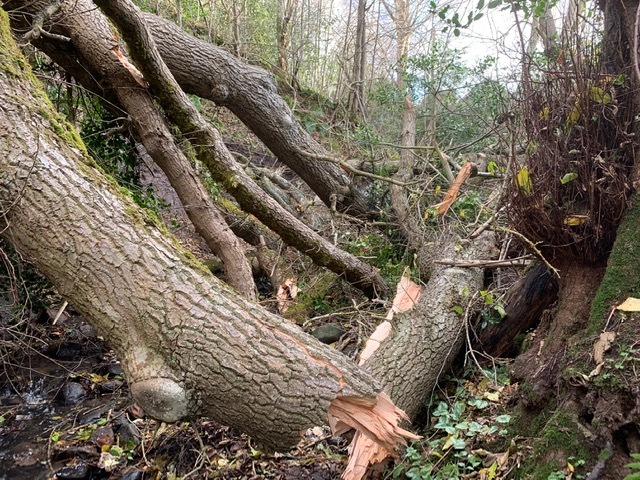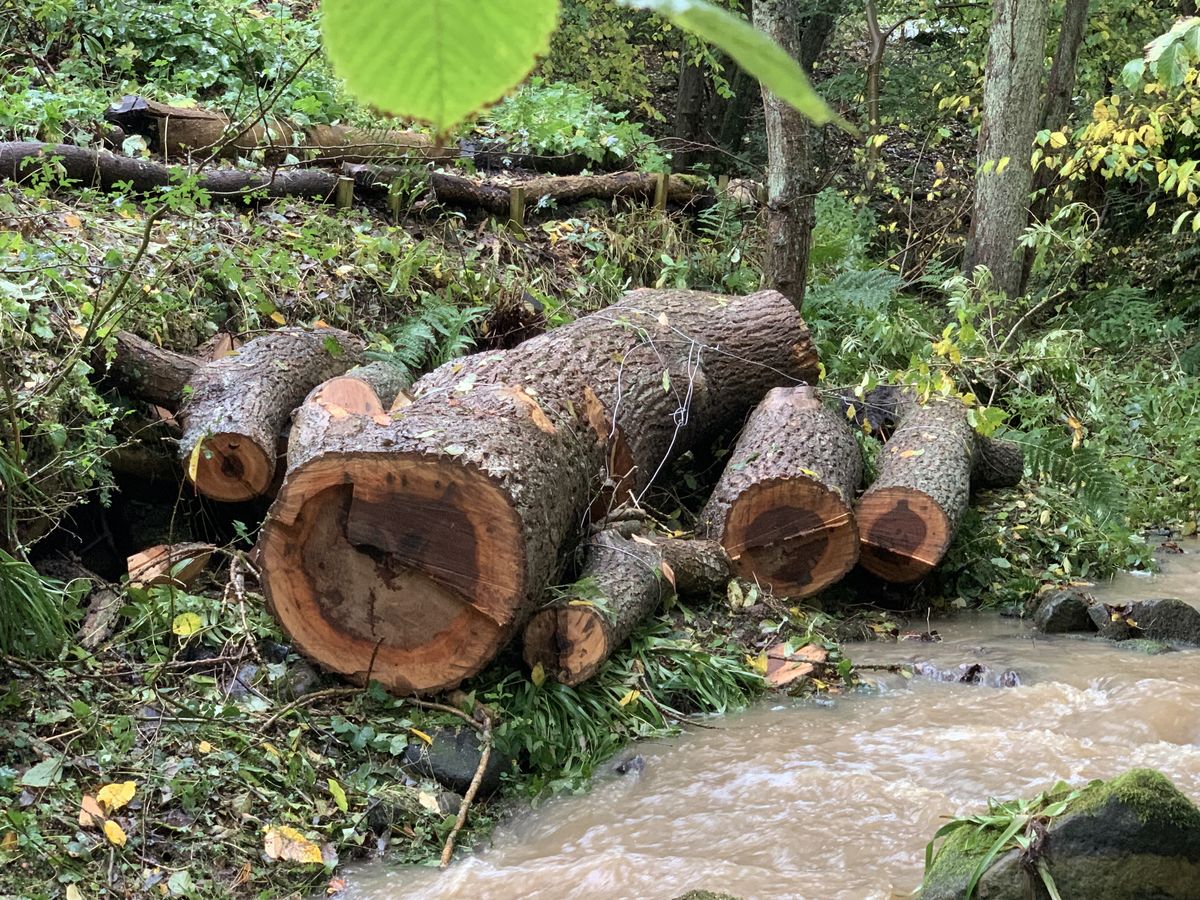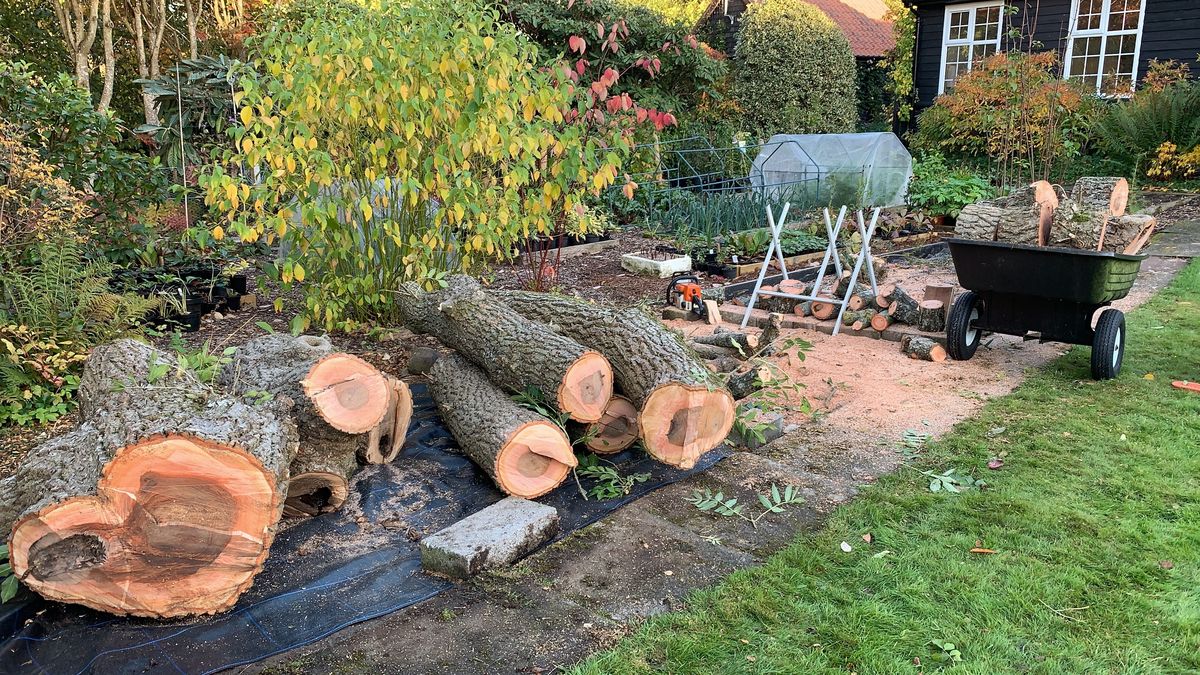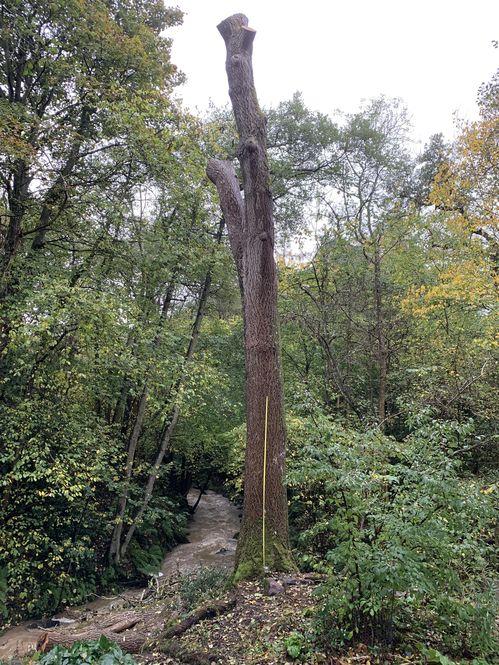Dealing with ash dieback at Humbie Dean
While Covid is dominating the airways may seem an odd time to draw attention to similar pandemic amongst trees – but like Covid, gardeners ignore it at our peril.
Ash dieback was first identified in the UK about ten years ago. It is caused by an airborne fungus, so there is little which can be done to halt its spread. It is likely to lead to the death of up to 80% of all Ash Trees in the UK. The problem is well described at woodlandtrust.org.uk.
Ten years ago it seemed a remote problem, at least to me. Two years ago the first signs appeared in my woodland garden at Humbie Dean in East Lothian where the largest trees comprise ash, alder and beech. Ash are my most numerous trees and the largest. Many are over 100 years old. I should say 'were over 100 years old ' as I have had to remove most of them during November 2021.

In the summer of 2018 I began to notice that many of my ash trees were increasingly thin at the top and around their periphery; that they tended to hang onto dried seedheads; sported profuse fresh growth from the main trunk; and the occasional vertical lesion. The speed at which symptoms developed was astonishing. Within two years the most affected tree had barely any foliage other than close to the trunk because the fungus progressively shut off the rising sap. The fungus infected the ash trees in my garden and those on neighbouring land, in some of which symptoms by then were much more advanced.

Ash is prone to shedding branches even at the best of times; under attack from ash dieback this tendency seems to become more pronounced as the wood of the tree becomes increasingly brittle. This has two consequences: tree surgeons will no longer climb a tree when it gets to that stage; and trees blown down in a gale shatter on impact. A tree which can’t be climbed must be felled rather than taken down from the top in controlled stages. So it’s important that gardeners to deal with affected trees before the disease is too advanced if damage to surrounding planting is to be minimised – and damage to neighbouring gardens averted.

The good news, based on my experience, is that even very large trees can be removed from a densely planted garden with minimal damage. It just needs the right tree surgeon. I’ve ended up with a vast pile of logs; with sections of trunk left to decay in inaccessible parts of the garden; and with a huge pile of mulch to spread. Managed removal of dying ash is not cheap, but failure to do so risks destroying years of patient development in a garden, and, if like me, your allotted span of three score year and ten is running out, there isn’t much time to start again.
The bad news, also based on my own experience, is that the uncontrolled fall in a storm of a single dying ash tree from a neighbour’s land can do way more damage to your garden.

Having removed seven large ash trees, I can still describe my garden as a woodland one, albeit less leafy than it was. But I have light and planting opportunities which I could not have imagined a few years ago. I have been able to extend the fencing to the lower garden and meadow to exclude the rabbits, deer, and hares, none of which read gardening books and whose appetites as a result tend to be discouragingly undiscriminating.
While I miss the ash, their removal opens a new chapter in the development of Humbie Dean and restores light levels in the house to what they must have been fifty years ago. Even ash dieback has some upside – provided you are able to manage the problem, as I was fortunate to be.
by Frank Kirwan, Humbie Dean, East Lothian
Frank’s garden will be open with Scotland’s Gardens Scheme again in 2022. Click HERE for dates and directions.


 Find a Garden
Find a Garden

 What's New
What's New

 Our Impact
Our Impact

 Join
Join


